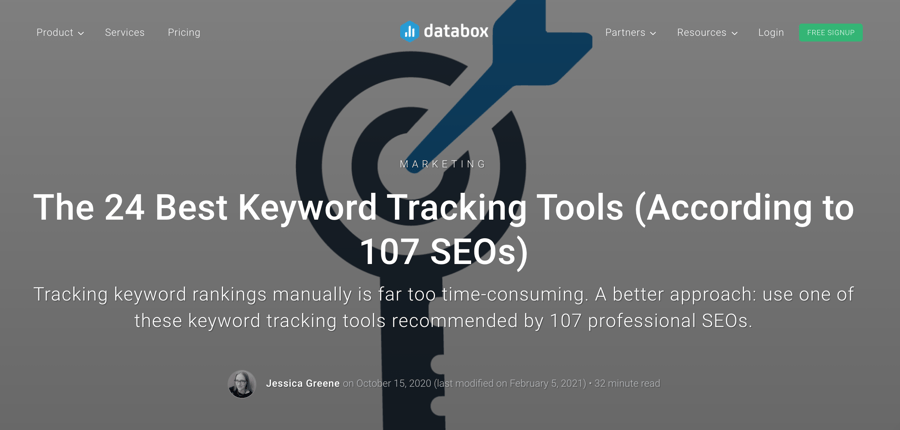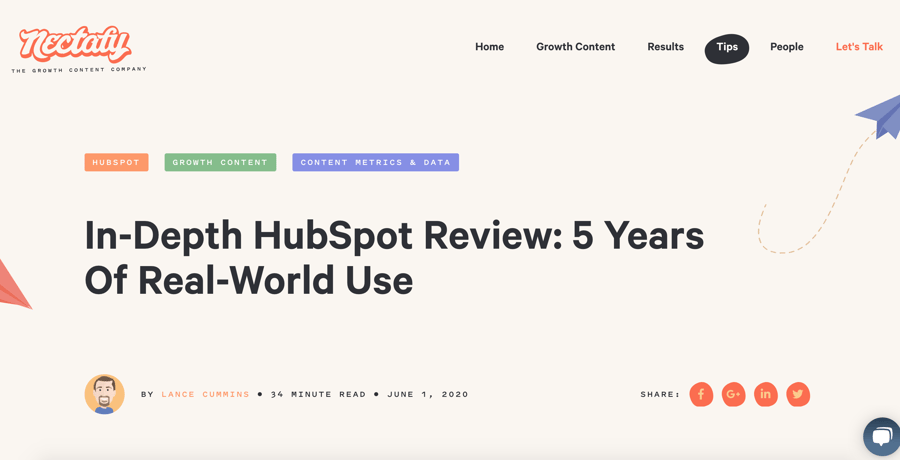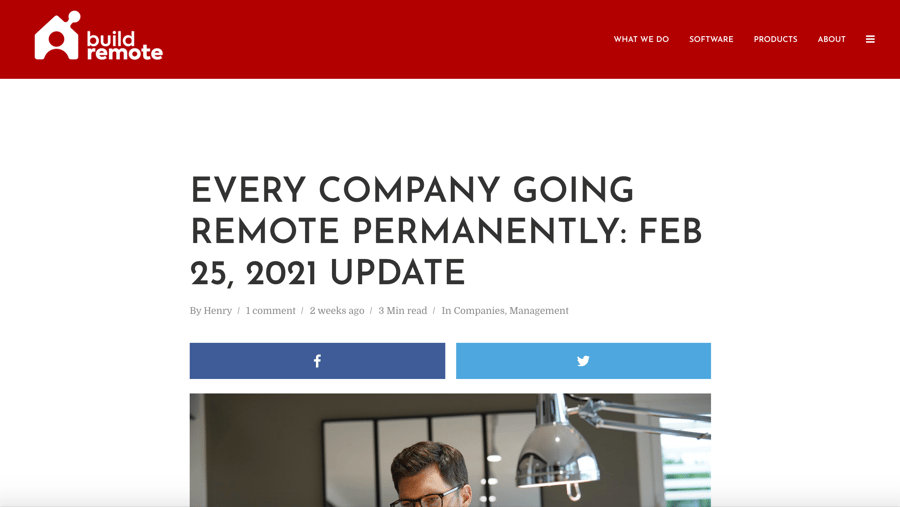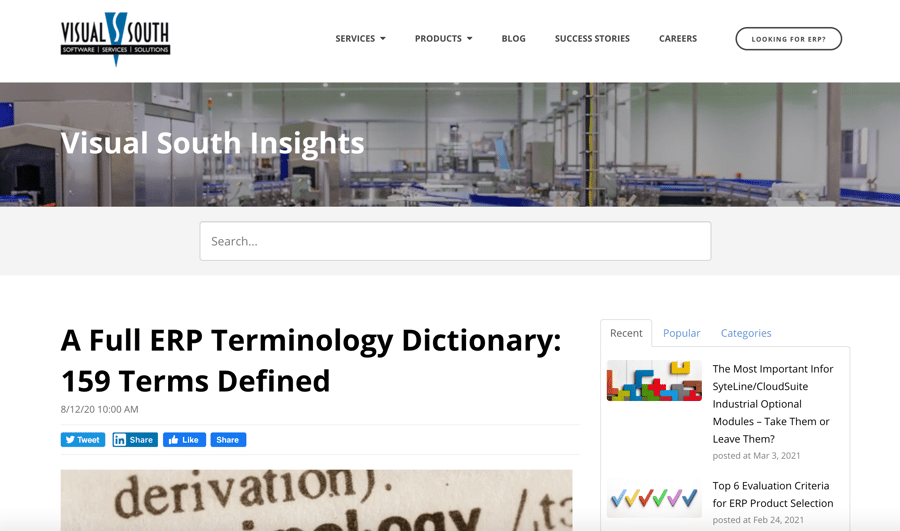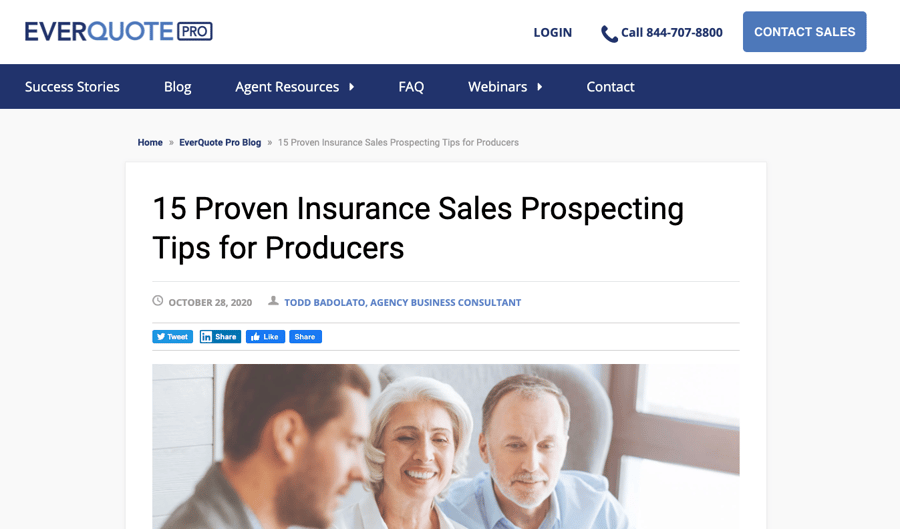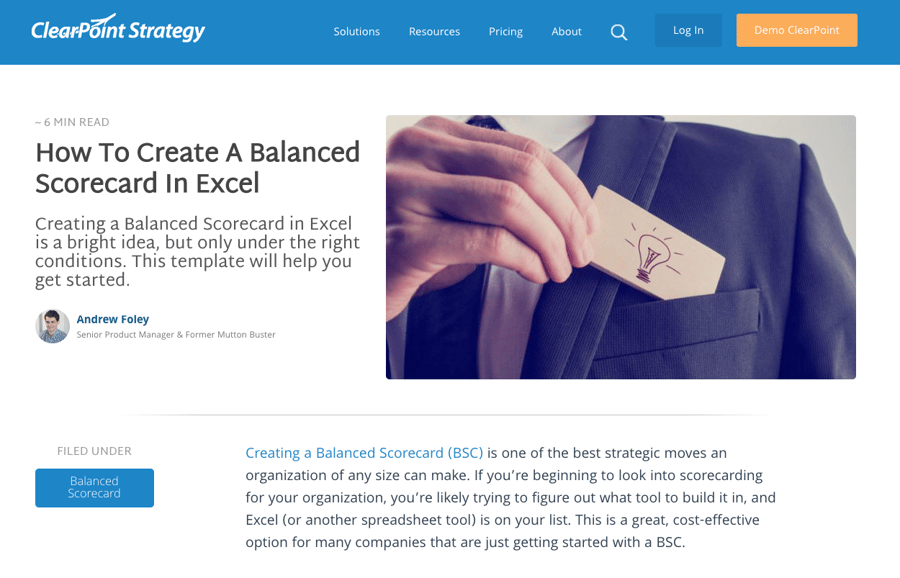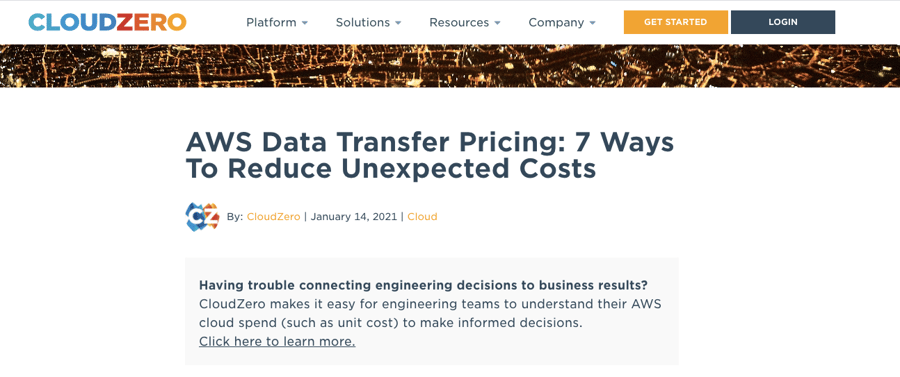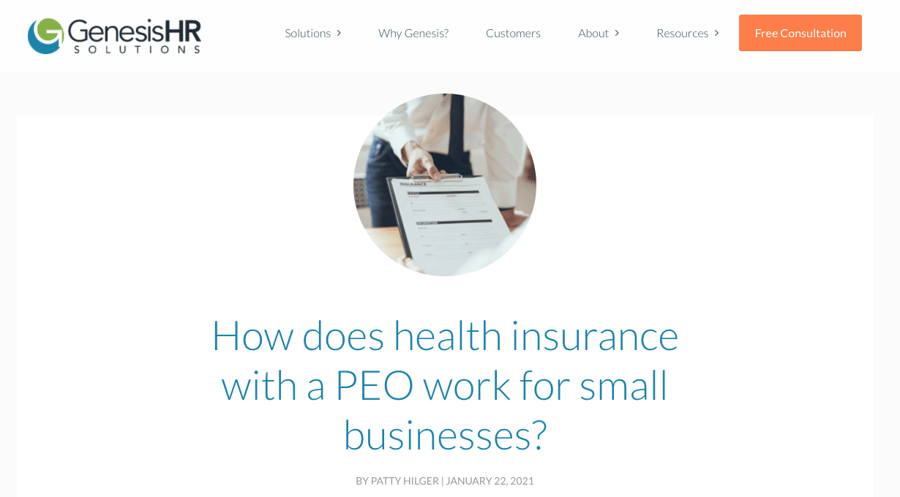16 Successful Blog Post Types (With Real Examples)



Table of Contents
- Survey Posts
- Review Posts
- Living (Not Evergreen) Posts
- Dictionary Posts
- Comparison Posts
- Template Posts
- Combination Posts
- 2x, 3x, or 4x Posts
- 5x, or Pillar, Posts
- Offer Introduction Posts
- Rewrite Posts
- Addition Posts
- Key Performance Indicator (KPI) Posts
- Comparison (or Alternative) Posts
- Example Posts
- Persona Responsibilities Posts
You’ve made it here, so I’m going to assume you know plenty about picking good blog post topics for your audience. Whether you were emailed this article or found it through Google, your interest alone shows you have a level of expertise in blogging beyond the basics.
So, you know how to pick good topics. But to really maximize the chance of success, you have to pair the topic with the right blog post type.
A great topic idea that is too short will get no results.
A timely topic that isn’t updated periodically with current information will lose results.
A successful topic that isn’t expounded on will decay.
Today, we are covering 16 proven blog post types that will position your next topic idea for success. With each post type, you’ll learn why it works, when to use it, and get a statistical breakdown of a real blog post example.
Use the table of contents to jump to a specific post type.
Survey Posts
People like to be mentioned and featured in articles. Collect quotes and ideas from survey contributors for your next blog post, and reap the benefits of additional shares from your contributors.
What is it?
A survey post is one in which you gather content through a survey. The ideas, recommendations, quotes, and data you collect become your article’s content.
Why does it work?
First, you get the benefit of free content ideally from experts on the topic. That makes your content creation process easier and content quality improved. Second, you get the benefit of your contributors choosing to share and boost your post.
Use it when you want to:
- Gather good information, quotes, and data for your content.
- Earn additional shares and links in the few days after the post is published.
Example & Results
The 24 Best Keyword Tracking Tools (According to 107 SEOs) by Databox
- Backlinks: 91
- Estimated monthly visits: 2,200
- Top 100 keyword rankings: 645
Visit Pattern
If this type of post is successful, this is the general pattern of visits you could expect to see with the article.
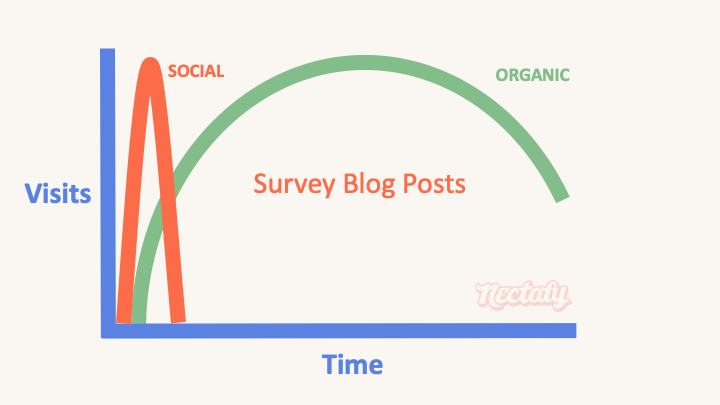
Review Posts
People search for and rely on reviews of products, services, and software tools. The Yelps, Amazons, and Capterras of the world have cornered the user-generated reviews market. But there is still a chance to go in-depth on your experience with a product (for a chance to attract visitors).
What is it?
A review post is one that explains the author’s first-hand experience with a product or service.
Why does it work?
People find in-depth reviews useful and therefore search for them. If you’re an ERP consultant, you can review ERP software, for example. On the search results page for every “review” type of keyword, you’ll see at least one or two of these in-depth blogs mixed in with review sites.
Use it when you want to:
- Review a product or service to help attract potential clients.
- Capture search volume for reviews of the product or service in Google each month.
Example & Results
In-Depth HubSpot Review: 5 Years Of Real-World Use by Nectafy
Nectafy received a backlink from HubSpot itself for this post!
- Backlinks: 103
- Estimated monthly visits: 1,500
- Top 100 keyword rankings: 460
Visit Pattern
If this type of post is successful, this is the general pattern of visits you could expect to see with the article.
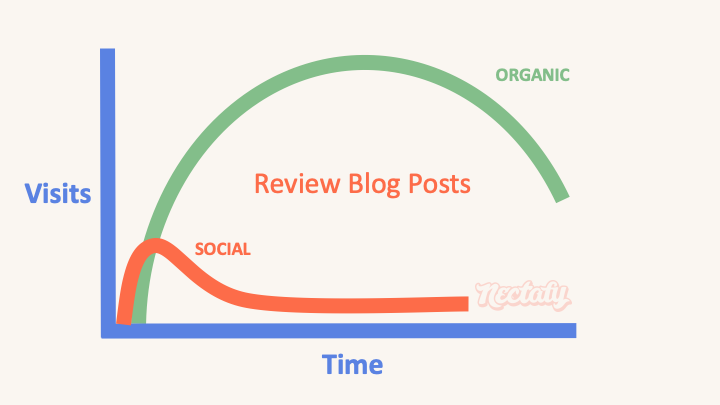
Living Posts (Not Evergreen)
Google likes to put fresh content at the top of its search results. People like to link to fresh content if they trust it’ll be continually updated. Go with a living post to rank highly in Google and attract links.
What is it?
A living post is one you commit to updating whenever news changes. It’s likely an important list within your industry (companies that have started to do X, studies released about Y, people to start following on topic Z).
Why does it work?
One way to compete with more authoritative sites is to outwork them. If Forbes writes about the “10 Most Influential People In Artificial Intelligence,” they’ll likely rank highly for it. But they will probably stop working on it then and there. If you write one about the 50 most influential people, then commit to updating it monthly to add new names, you’ll compete and likely beat Forbes over time.
Use it when you want to:
- Attract more links to your site to build its authority. People are likely to link to you if they trust you’ll keep updating the list.
- Increase visibility for your company. By mentioning companies, experts, or new studies, you get the chance to notify the people when they are added to the list.
Example & Results
Every Company Going Remote Permanently by Buildremote
Buildremote is outranking Entrepreneur, Business Insider, Forbes, and CNN on this keyword with a domain authority of just 14/100.
- Backlinks: 29
- Estimated monthly visits: 1,500
- Top 100 keyword rankings: 32
Visit Pattern
If this type of post is successful, this is the general pattern of visits you could expect to see with the article.
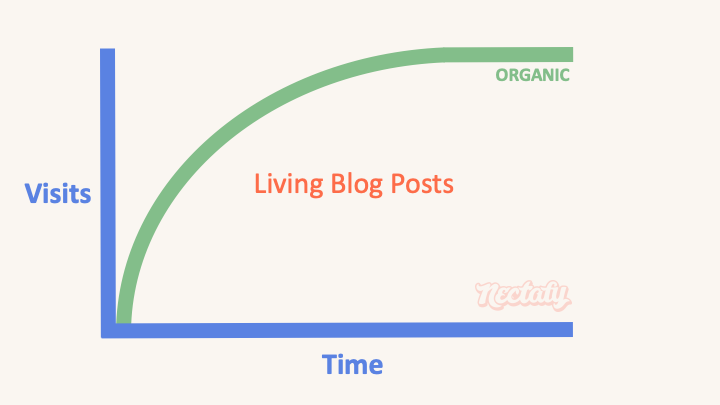
Dictionary Posts
Give yourself a chance to build authority and improve internal linking with a dictionary post, defining all of the relevant terms in your industry.
What is it?
A dictionary post is a list and explanation of key terms for an industry or given topic.
Why does it work?
People use Google to get quick definitions for terms and concepts they want to understand. Those terms have search volume, and the overall “dictionary” or “terms” keywords for any given industry also have search volume. You can pick up some top-of-funnel keyword rankings with this post, but it also allows you to do internal linking to help pass authority to other articles. Each term can be linked to other blog posts that explain the topic more deeply.
Use it when you want to:
- Pick up some top-of-funnel keywords to start building your authority.
- Set up a good internal linking strategy.
Example & Results
A Full ERP Terminology Dictionary: 159 Terms Defined by Visual South
- Backlinks: 20
- Estimated monthly visits: 500
- Top 100 keyword rankings: 555
Visit Pattern
If this type of post is successful, this is the general pattern of visits you could expect to see with the article.
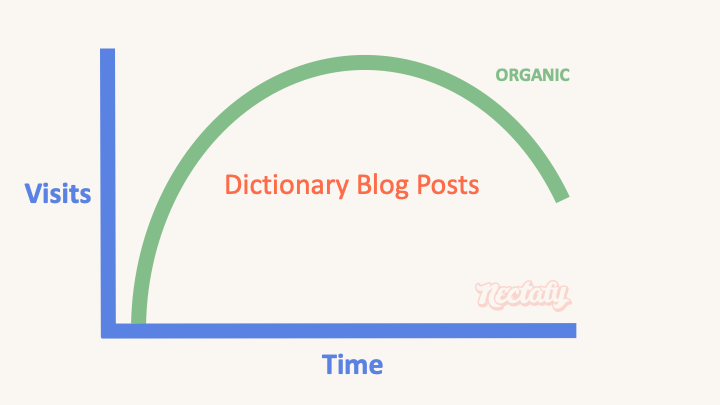
Comparison Posts
People use Google to compare concepts, companies, frameworks, and alternatives. If the comparison is useful to your customer, you could attract them to your site. Learn more about how to find comparison keywords here.
What is it?
A comparison post analyzes at least two competing tools, products, events, strategies, etc.
Why does it work?
People love to compare things in order to find a winner. This particular human interest could be a good opportunity for your website and play a role in the rest of your SEO strategy.
Use it when you want to:
- Tap into potential customers who are using Google to compare something related to what you do.
- Rank for a specific, usually less competitive, comparison keyword.
Example & Results
HS Codes, HTS Codes, and Schedule B Codes: What's the Difference? By Shipping Solutions
- Backlinks: 5
- Estimated monthly visits: 6,000
- Top 100 keyword rankings: 619
Visit Pattern
If this type of post is successful, this is the general pattern of visits you could expect to see with the article.
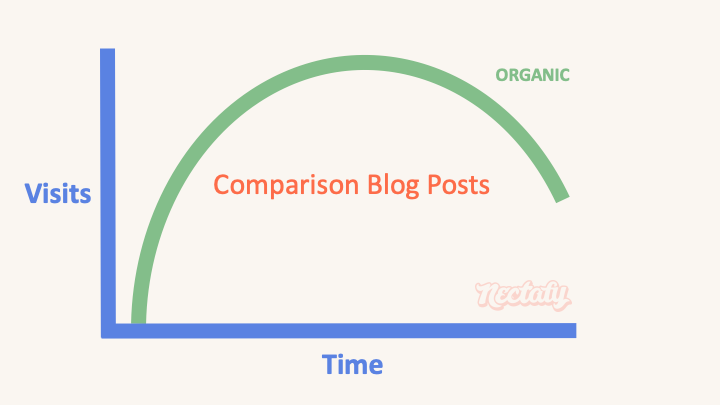
Template Posts
Templates are useful, practical tools for your readers. If you want to attract readers (and more importantly, convert them to leads) write a template post and offer a downloadable template behind a form.
What is it?
A template post is practical and usable. Readers can follow along step by step to build a framework for their own business.
Why does it work?
Template ideas are frequently searched in Google, so you can attract new visitors. Templates are also seen as valuable offers, so you can convert readers into leads.
Use it when you want to:
- Create and offer common templates that would be useful to your persona.
- Increase the number of leads you get from your site.
Example & Results
Conducting A Gap Analysis: A Four-Step Template by ClearPoint Strategy
- Backlinks: 530
- Estimated monthly visits: 13,000
- Top 100 keyword rankings: 1,500
Visit Pattern
If this type of post is successful, this is the general pattern of visits you could expect to see with the article.
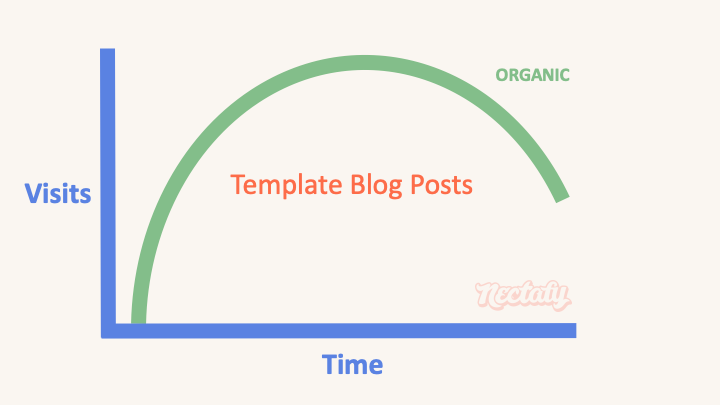
Combination Posts
If you have blog posts ranking on page one of Google, you’ll probably also have posts ranking on pages two through five. The bad news? You’re not getting anyone to your site unless the content is ranking on page one.
What is it?
Combining your existing blog posts on a common subject into one large post.
Why does it work?
If you have two blog posts on a similar topic both ranking on page two, the posts are cannibalizing one another: They are both doing OK, but not well enough to get to page one, where the majority of your audience will find the post—and you.
Use it when you want to:
- Improve the results for multiple articles on the same topic.
- Keep two blog posts from competing on the same keyword and getting stuck below page one.
Example & Results
15 Proven Insurance Sales Prospecting Tips for Producers by EverQuote
- Backlinks: 60
- Estimated monthly visits: 700
- Top 100 keyword rankings: 0
Visit Pattern
If this type of post is successful, this is the general pattern of visits you could expect to see with the article.
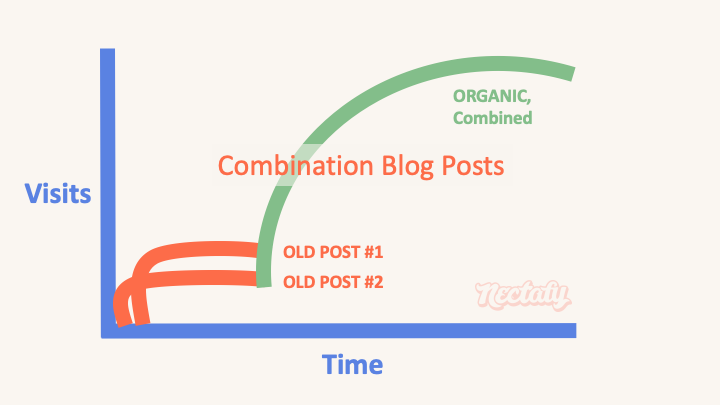
2x, 3x, or 4x Posts
One way to potentially rank better for targeted keywords is to increase the word count of a page or a post. A standard article at Nectafy is 600-800 words. We also do posts that are two, three, and four times longer than the regular posts:
- A 2x post is 1,200 - 1,600 words
- A 3x post is 1,800 - 2,400 words
- A 4x post is 2,400 - 3,200 words
What are they?
These are longer form posts of any kind that specifically need additional words to compete on a given keyword or cover a topic completely.
Why does it work?
Time on page is arguably the most important factor in attaining high keyword rankings. When people read blog posts for a long time, Google determines they are valuable and ranks them higher. If you write quality content and have long word-count articles, you position yourself for a high “time on page" metric, and therefore, high rankings in Google results.
Use it when you want to:
- Give yourself an increased chance to rank for a given keyword because your website lacks the authority to rank with a regular-sized post.
- Cover a topic more deeply than the sites that already rank for the topic.
Example & Results
What To Expect From Most Bookkeeping Price Packages (& A Better Solution) by Zeni
- Backlinks: 0 (It ranks on its own without any external linking yet)
- Estimated monthly visits: 500
- Top 100 keyword rankings: 95
Visit Pattern
If this type of post is successful, this is the general pattern of visits you could expect to see with the article.
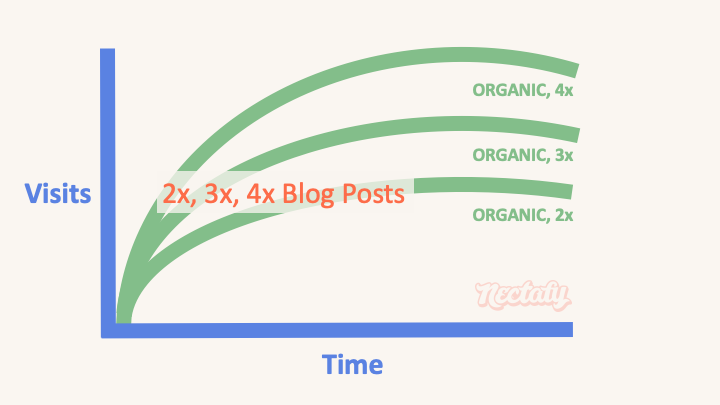
How much could your company grow with growth content?
Calculate your expected growth in organic visits based on the average Nectafy client.
Get all these numbers in your inbox.
5x, or Pillar, Posts
Google likes to put content at the top of search results that is useful for readers. If your content is useful and long, you increase your chances of ranking highly in Google.
What is it?
A 5x post (HubSpot calls it a pillar post) is a 3,000+ word article that provides a deep look at a given topic and includes chapters.
Why does it work?
This works for the same reason as the post types above, 2x, 3x, 4x:
Time on page is arguably the most important factor in attaining high keyword rankings. When people read blog posts for a long time, Google determines they are valuable and ranks them higher. If you write quality content and have long word-count articles, you position yourself for a high “time on page” metric, and therefore, high rankings in Google results.
Use it when you want to:
- Compete on a search term that won’t rank with a regular-length article (600-800 words). It’s too competitive according to Semrush’s Keyword Difficulty metric or the websites currently ranking for the keyword have much higher authority than yours.
- Cover a topic that requires a more in-depth explanation.
Example & Results
These 19 Video Call Backdrops Could Actually Make You Proud To Work From Home by Anyvoo
- Backlinks: 125
- Estimated monthly visits: 9,000
- Top 100 keyword rankings: 1,000
Visit Pattern
If this type of post is successful, this is the general pattern of visits you could expect to see with the article.
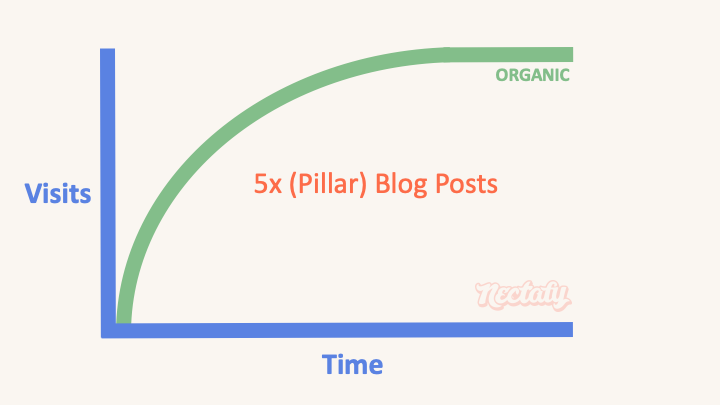
Offer Introduction Posts
The ultimate goal of a website for most B2B companies is to attract leads that turn into customers. Blog posts are one of the primary ways to attract visitors, who you then ask to take some action to become a lead. An offer introduction post might be the most powerful way to turn visitors into leads on your blog.
What is it?
An article that introduces a downloadable offer (whitepaper, report, ebook, template, etc.) that sits behind a form. The blog post should entice people to download the offer, either right on the post itself or by clicking a call to action to visit the offer landing page. The post’s copy can be an excerpt from the offer, or cover a closely related topic.
Why does it work?
Offers don’t rank by themselves in Google search results because they are behind a form. An offer introduction post gives you a chance to rank for a keyword that describes the content within your offer and builds new inroads of visitors. If your site as a whole converts 1-3% of its visitors into leads, some offer introduction posts will do 10-15% conversion.
Use it when you want to:
- Attract more eyes to a helpful offer (lead magnet).
- Rank in search results for terms that describe what’s inside your offer.
Example & Results
How To Create A Balanced Scorecard In Excel by ClearPoint Strategy
- Backlinks: 138
- Estimated monthly visits: 1,500
- Top 100 keyword rankings: 120
We tracked ClearPoint’s metrics closely while testing this type of blog post. Over a four-month period this post:
- Had 5,826 views
- Generated 578 leads
- Converted (from view to lead) at a rate of 10%
Visit Pattern
If this type of post is successful, this is the general pattern of visits you could expect to see with the article.
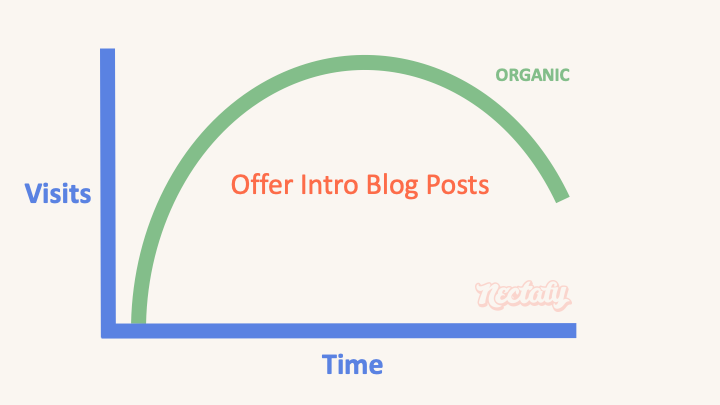
Rewrite Posts
Google doesn’t like old content. What does the Google algorithm consider old? A toddler. Two years is old in Google’s world.
What is it?
This is a rewrite of an old article. If an article that performed well in the past has slipped in rankings, it simply needs to be refreshed and updated.
Why does it work?
Read this article titled, The 2-Year Blogging Nosedive. It’s hard to rank on page one of Google for more than about two years (as a general rule of thumb). By rewriting the post, there is a high likelihood that you’ll regain the previous page one rankings you had.
Use it when you want to:
- Get an important keyword back on page one of Google (or higher up page one itself)
- Refresh an outdated article
Example & Results
AWS Data Transfer Pricing: 7 Ways To Reduce Unexpected Costs by CloudZero
- Backlinks: 76
- Estimated monthly visits: 600
- Top 100 keyword rankings: 357
After publishing this article in November of 2019, the post ranked 12th in Google for the top keyword. After rewriting the post in January of 2021, it jumped to seventh.
Visit Pattern
If this type of post is successful, this is the general pattern of visits you could expect to see with the article.
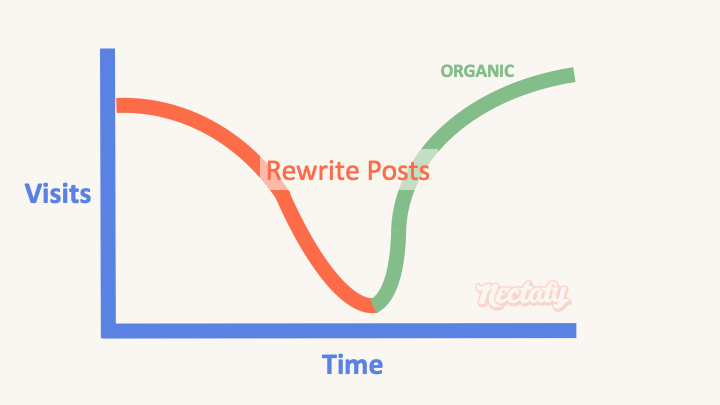
Addition Posts
Many of your blog posts will end up stuck just below your ranking or traffic goal. Add content to those existing posts to boost them a few spots in Google and achieve your goals.
What is it?
This is an addition to an existing article (likely doubling the length of the post). Try this tactic if the existing article is close to ranking where you want it to and needs a boost (page two to page one, or position 10 to position five). The new part of the article is added directly to the same URL and republished.
Why does it work?
Again, I think the most important factor in keyword rankings is time on page. If people read your articles for a long time, Google finds them valuable,
Use it when you want to:
- Move a keyword ranking up a few critical positions
- Provide a more in-depth article on a topic you’ve already written
- Regain keyword rankings you’ve lost
Example & Results
How does health insurance with a PEO work for small businesses? by Genesis HR Solutions
- Backlinks: 51
- Estimated monthly visits: 400
- Top 100 keyword rankings: 46
This post (originally published in October of 2018) ranked seventh in Google for the top keyword, “PEO health insurance.” After adding to the post in January 2021, it jumped to fourth.
Visit Pattern
If this type of post is successful, this is the general pattern of visits you could expect to see with the article.
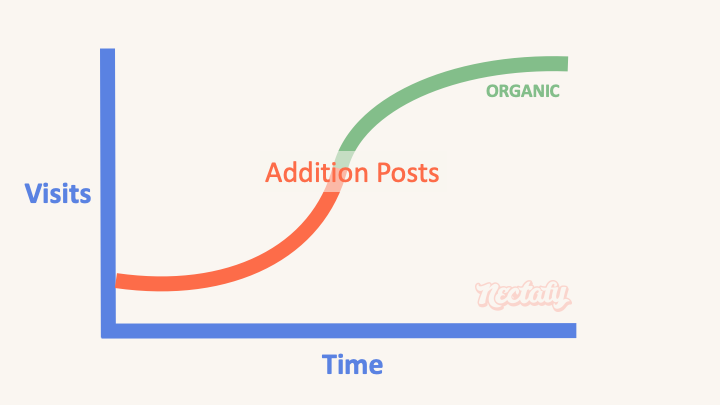
Key Performance Indicator (KPI) Posts
People in every industry are searching for key performance indicators (KPIs) applicable to their business, role, specific marketing channels, etc., because they are trying to find ways to measure their organization’s progress toward goals.
What is it?
A KPI post is targeted to your personas and explains the key indicators they should use to measure performance.
Why does it work?
KPIs are applicable to every B2B industry, thus, there is search volume in every industry for the terms [industry] + KPIs. You can almost guarantee people are looking for these posts—there will always be demand.
Use it when you want to:
- Attract your target audience at the top of the funnel (this is not a conversion-oriented post).
- Set yourself up for inbound links—people like to link to these kinds of posts.
- Rank for a lower difficulty keyword. These keywords are typically less competitive.
Example & Results
18 KPIs To Measure Performance (& How To Choose & Track Them) by ClearPoint Strategy
(Note: This specific blog post has more than one million views—you can read about how we achieved that in this article.)
- Backlinks: 8,000
- Estimated monthly visits: 33,000
- Top 100 keyword rankings: 2,700
Visit Pattern
If this type of post is successful, this is the general pattern of visits you could expect to see with the article.
Comparison (or Alternative) Posts
People like to compare products, ideas, methods, and more in search engines. It’s part of the decision making process.
What is it?
Comparison posts put two concepts, products, features, methods, companies, etc. head to head in an article.
Why does it work?
There is search volume in almost every industry for comparisons or alternatives to commonly used products and services. It’s almost guaranteed that your ideal customer is doing these comparisons in their head, so help them by providing all the (fair and balanced) evidence. These posts get results because they help your persona get closer to making a purchase decision.
Use it when you want to:
- Increase search volume for keywords related to your service/product compared to other ideas or solutions.
Example & Results
Our post, HubSpot Alternatives: Our Clients Are Asking, So Here's Our Research
Semrush Data
- Backlinks: 10
- Estimated monthly visits: 500
- Top 100 keyword rankings: 99
Visit Pattern
If this type of post is successful, this is the general pattern of visits you could expect to see with the article.
Example Posts
People like to see tangible evidence of products or services, and they like to see it all at once. This type of post attracts top-of-funnel traffic by search volume, but it can also work as a bottom-of-funnel technique when keyword search intent calls for it.
What is it?
Example posts list real-life use cases for a product or a service, or display examples of how to do something. These almost always include a visual component. Examples:
- Photos/mock-ups of various conference room setups if you do office design.
- Screenshots of human resource software if you’re a professional employer organization.
- Screenshots of landing pages if you sell HubSpot services.
Why does it work?
These visual posts are so successful because they feel actionable and not so esoteric. They also have a strong social component, which allows you to highlight other companies. People like to be praised, and by naming other companies and linking to them, you’ll improve your chances of getting shout-outs (and backlinks) from those you’ve featured.
When to use it:
- When there’s enough search volume to match your current content strategy phase.
- To fuel conversions. If there is keyword search intent for examples of products or services in your industry, that could indicate the searcher is looking for your specific product/service.
Example & Results
4 Payment Page Design Examples to Copy by BlueSnap
- Backlinks: 349
- Estimated monthly visits: 2,000
- Top 100 keyword rankings: 111
Visit Pattern
If this type of post is successful, this is the general pattern of visits you could expect to see with the article.
Persona Responsibilities Posts
In the B2B market, growing companies frequently grapple with hiring decisions: Should they hire new employees or outsource? When these companies search for lists of job responsibilities, they’re likely thinking about job descriptions. If your company provides that product or service and can potentially help them instead of or in addition to them making an internal hire, then this is a valuable post type for them.
What is it?
These posts list the responsibilities of those employees who would use your product; a product/service complimentary to the role; or replace the role.
Why does it work?
You can say with confidence that you’re reaching people just as they’re about to make a job posting. If you can help them by providing a replacement, your post will be helpful.
Use it when you want to:
- Your product could be an alternative to hiring a new role (your persona) or a supportive tool to that new role
- There is enough search volume to justify pursuing the article
Example & Results
9 Critical Responsibilities of an IT Security Manager by BitSight
- Backlinks: 252
- Estimated monthly visits: 600
- Top 100 keyword rankings: 65
Visit Pattern
If this type of post is successful, this is the general pattern of visits you could expect to see with the article.
Plan Your Next Blog Post
If you are new to blogging, we always recommend selecting blog post topics and keywords in this order:
- Persona: Is this topic something one of your personas would be interested in?
- Keyword Difficulty: How difficult is it to rank for a keyword in Google’s results?
- Monthly Search Volume: How often is it searched in Google per month?
After deciding on a keyword and a topic using those three criteria, you’re halfway there.
Next, you need to find the right blog post type to pair with that topic. That’s where these sixteen post types come in handy—they can be deployed strategically to help your topic succeed.
If you’d like to see the complete strategy behind our B2B growth content, take a look at this guide:
The Content Strategy Guide To Take You From 0 to 25k Site Visits Per Month

